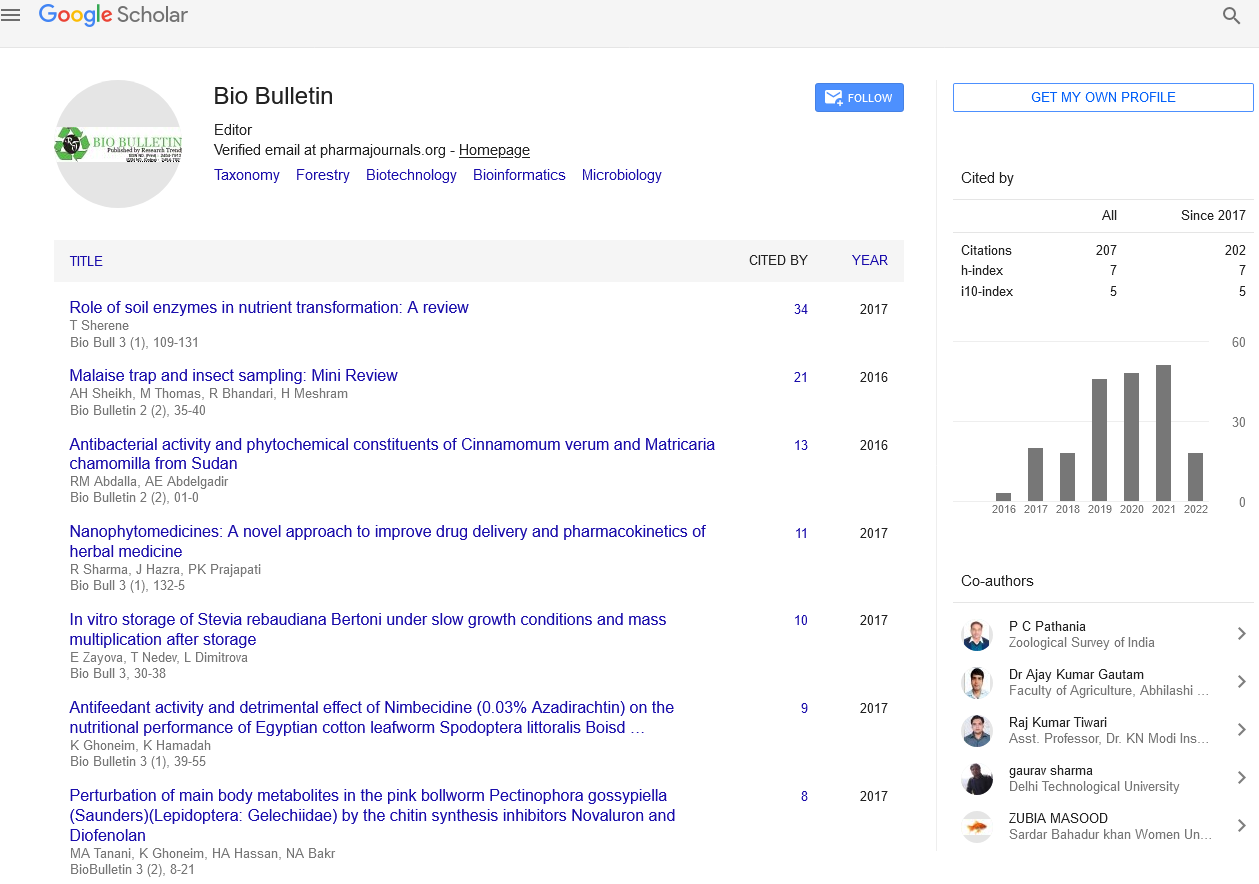Description of life history stages of chicken louse, Menacanthus cornutus (Phthiraptera: Amblycera) infesting domestic fowl
Abstract
Author(s): Adesh Kumar* and Rakesh Kumar**
Amblyceran as well as ischnoceran lice species exhibited hair like structure known as setae. Setae are species specific and vary in number, length and arrangement on particular body regions from one lice species to other. The present study was undertaken to describe the correct position and arrangement of setae on taxonomically important body parts of life history stages of amblyceran louse, Menacanthus cornutus infesting domestic fowl. All stages of M. cornutus vary to each other in body shape, dimensions, colour and sclerotisation of different body parts. The first instar nymph has less number of tergal and sternal setae as compared to the second instar nymph. The gular plate of first instar nymph wanting of setae but second instar nymph has four setae. The anterior tergal setae in second instar nymph found absent but 2-3 anterior sternal setae are recorded on IV-VII segment whilst in third instar nymph sparsely beset anterior tergal and sternal setae was recorded. The gular plate of second instar nymph has 4 setae but gular plate of third instar nymph bear 6 setae. The gular plate in adult has 8 setae but the gular plate of third nymph instar showed 6 setae. The numbers of setae in sternal ctenidial patches remained less in third instar nymph in comparison to adults. The sexual dimorphism limited to male with smaller dimensions, less number of abdominal chaetotaxy and differences associated with genital features of posterior abdomen. The sexual dimorphism has shown by female as more elliptical and long abdomen, densely beset abdominal chaetotaxy and anal fringe with dorsal and ventral setae. A row of setae on subgenital plate of female was also present.
Share this article

